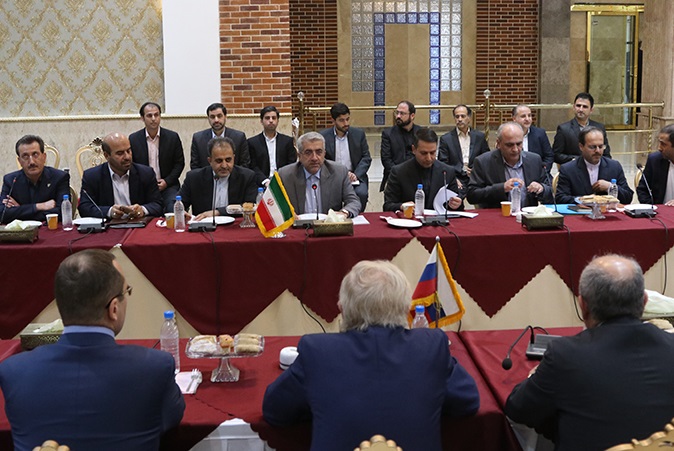Iranian and Russian officials have discussed possibly partnering to construct thermal and hydroelectric power plants in Iran.
“Russia is to allocate a loan worth 1.2 billion euro for the construction of 1,400-megawatts Sirik thermal power plant [in Sirik County in southern Iranian Hormozgan Province],” Iran’s energy minister, Reza Ardakanian, said during a contract signing ceremony in Tehran on September 15.
“As predicted, the related construction sites and needed equipment for commencing the project will be provided within the next two months,” Mehr quoted Ardakanian as saying.
The project’s total cost is 1.4 billion euro, and the power plant to be built will be comprised of four units that will produce roughly 600 megawatts (MW), sufficient to supply electricity to 150,000 homes. Russia is expected to finance 85 percent of the project, which had been agreed to in 2016.
According to Ardakanian, other projects will leverage Russian capital such as the construction of the Inche Boroun-Garmsar railroad that is expected to be implemented by March 2020.
Two projects – one for a hydropower plant and another for the rehabilitation of a thermal power plant – are on the agenda.
Also discussed during the signing ceremony was expanding nuclear cooperation. Alexey Likhachev, the head of Russia’s state nuclear energy company Rosatom, and Ali Akbar Salehi, the head of the Atomic Energy Organization of Iran, discussed joint interaction and cooperation within the International Atomic Energy Agency (IAEA).
In August of 2018, Iran resumed talks with Russia to build a new nuclear power plant capable of generating up to 3,000 MW of electricity. Iran currently has the capacity to produce 1,000 MW of nuclear electricity. Iran already runs one Russian-built nuclear reactor at Bushehr, the country’s first. Russia signed a deal with Iran in 2014 to build up to eight more nuclear reactors in the country.
Iran’s recent collaboration with Russia comes against the backdrop of the United States having pulled out of the Joint Comprehensive Plan of Action (JCPOA), or the Iranian nuclear deal, over one year ago and Iran vowing to retaliate if European powers cannot help save the deal by rescuing Iran from U.S. sanctions.
On July 1, Iranian officials said the country’s stockpile of enriched uranium to beyond the 300-kilogram limit set by the agreement had been increased. A week later, Iran announced it had exceeded the deal’s uranium enrichment level of 3.67 percent and may increase enrichment to 20 if Europe fails in its quest to keep the JCPOA alive.
Iran’s Atomic Energy Organisation subsequently announced that it has gone further, starting up 20 IR-4 and 20 IR-6 advanced centrifuges. Under the JCPOA, Iran was allowed to enrich uranium using only first-generation, or IR-1, centrifuges.







 The Mine Action Agency of Azerbaijan (ANAMA) reported on Thursday the discovery of a significant amount of explosives in the Khojavand district of ...
The Mine Action Agency of Azerbaijan (ANAMA) reported on Thursday the discovery of a significant amount of explosives in the Khojavand district of ...
 Russian peacekeeping forces, deployed in the Karabakh (Garabagh) region of Azerbaijan since 2020, have commenced their withdrawal from the area.
Russian peacekeeping forces, deployed in the Karabakh (Garabagh) region of Azerbaijan since 2020, have commenced their withdrawal from the area.
 Azerbaijan officially unveiled the logo for the upcoming 29th session of the Conference of the Parties to the United Nations Framework Convention o...
Azerbaijan officially unveiled the logo for the upcoming 29th session of the Conference of the Parties to the United Nations Framework Convention o...
 The Kazakh authorities have increased their arbitration claims against international oil companies involved in the development of the Kashagan oil ...
The Kazakh authorities have increased their arbitration claims against international oil companies involved in the development of the Kashagan oil ...



